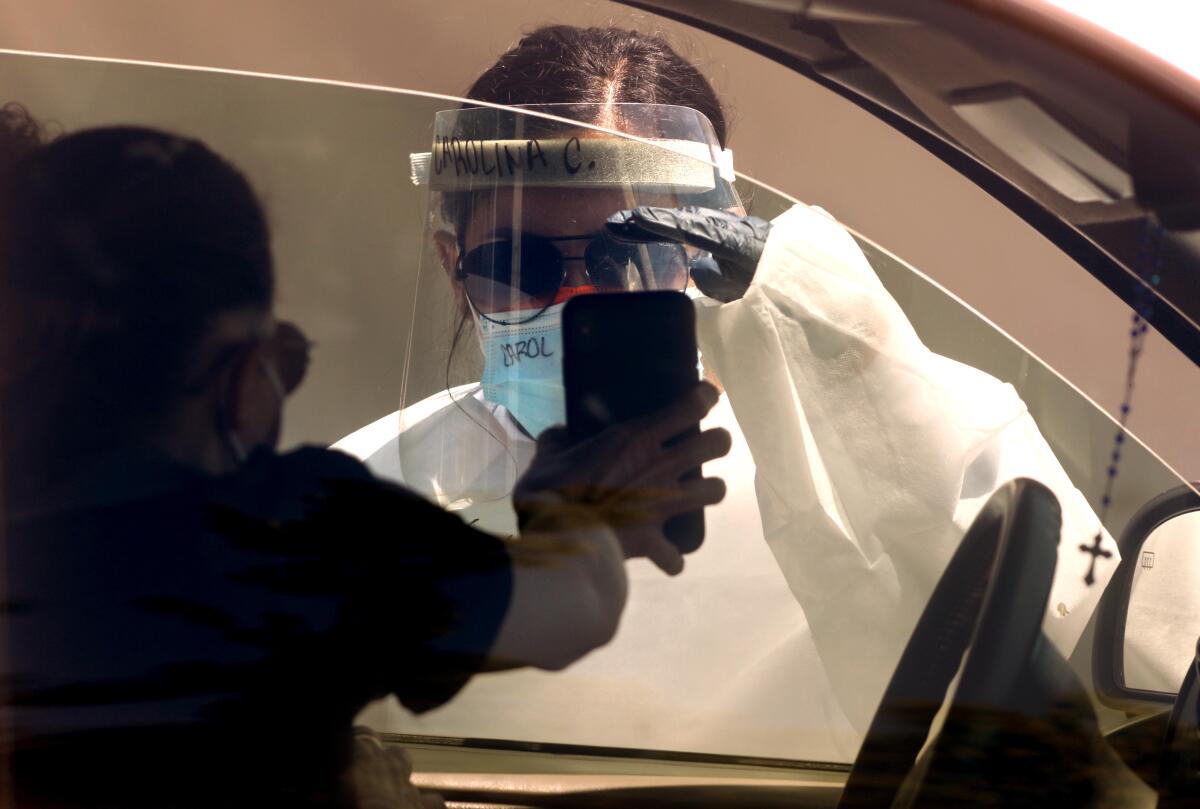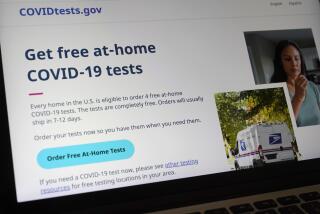California sets new priorities for who is tested for coronavirus as demand surges

State officials adopted new guidelines Tuesday outlining who should be prioritized for COVID-19 testing in California as cases surged and counties reported delayed lab results.
The new rules mark a move away from the Newsom administration‘s plans for anyone, including those without symptoms, to be tested for the virus in California. The guidelines instead adopt tiers that prioritize the testing of hospitalized patients with coronavirus symptoms, other symptomatic people, and then higher-risk asymptomatic individuals, according to state health officials.
“Today’s testing guidelines ... set priorities — Tier 1 and Tier 2 priorities — that look to really focus our initial testing on people who have symptoms,” said Dr. Mark Ghaly, the state’s secretary of Health and Human Services, during a briefing on Tuesday. Through such testing, he said, “we can make really important efforts in suppressing disease transmission.”
The change comes as California reports more than 330,000 confirmed COVID-19 cases, as well as increases in hospitalizations and the rate of positive tests over the last two weeks. Some counties are reporting bottlenecks at testing labs that have resulted in delayed results or a shortage of supplies as more people seek tests.
The new state testing guidelines are:
Tier 1:
- Hospital patients with COVID-19 symptoms
- Testing by state and local health officials to investigate and manage outbreaks
- Close contacts of those who test positive for the virus
Tier 2:
- Anyone with COVID-19 symptoms
- People with no symptoms who live or work in high-risk settings; those who work in high-risk settings and have frequent exposure to the public or to other people who may have the virus, such as at skilled nursing homes, in residential care facilities for the elderly, at homeless shelters and correctional facilities, in healthcare offices and in emergency services
- Hospital patients who need to be tested before hospital admission or a medical operation, or upon discharge to another care facility
Tier 3:
- Workers who have frequent interactions with the public or cannot maintain six feet of distance from others, including those in retail, manufacturing, food service, agriculture, food manufacturing, public transportation, education and child care.
Tier 4:
- Asymptomatic people who are not included in the earlier tiers “but believe they have a risk for being actively infected”
- Routine testing by employers
More to Read
Start your day right
Sign up for Essential California for news, features and recommendations from the L.A. Times and beyond in your inbox six days a week.
You may occasionally receive promotional content from the Los Angeles Times.







